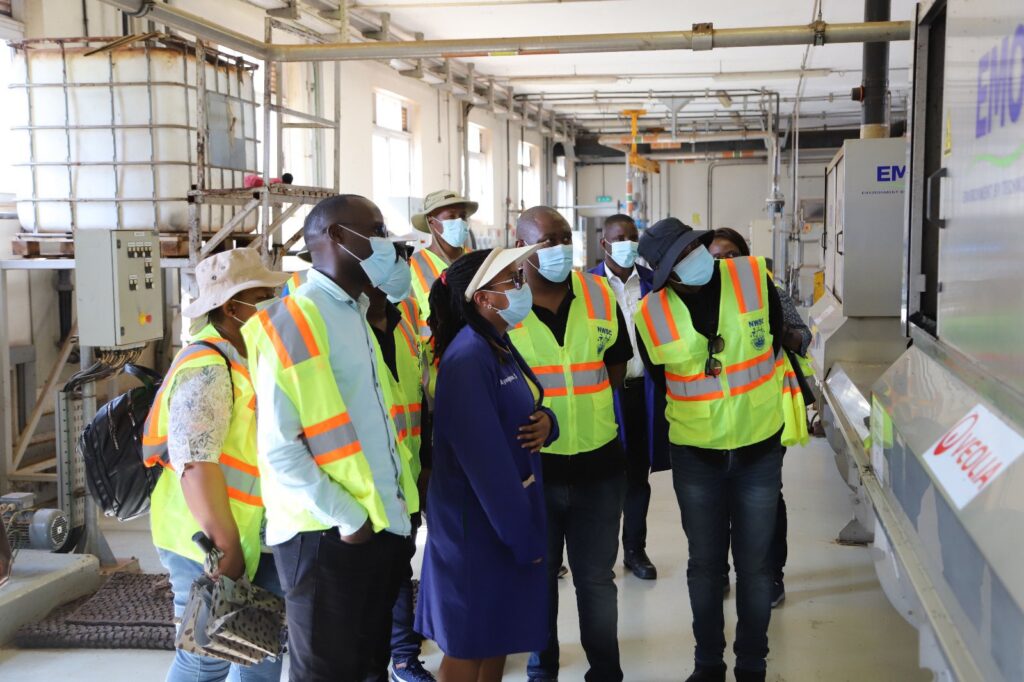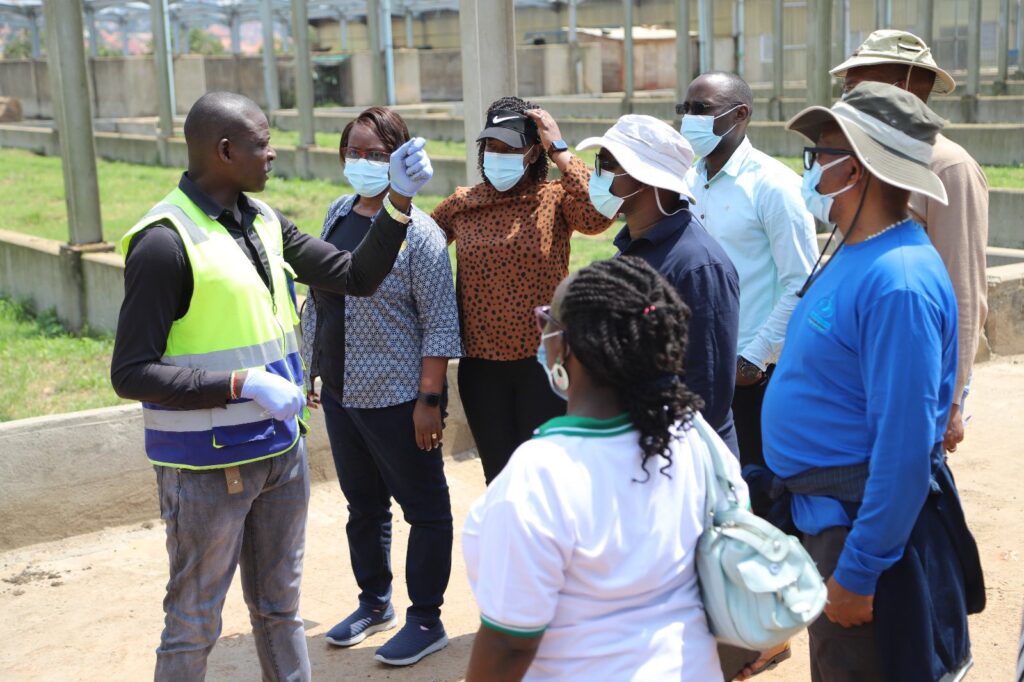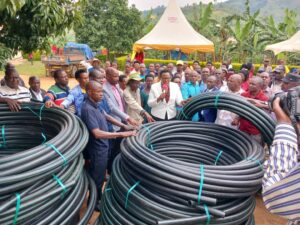
A Team from the Urban Water Supply and Sewerage Services Department in the Ministry of Water and Environment led a Delegation from the Ministry of Natural Resources of the Kingdom of Lesotho on a bench-mark tour to the National Water and Sewerage Corporation’s Lubigi Sewerage Treatment Plant (STP), with the aim of tapping into the rich experience in provision and management of water supply and sanitation services.
The Lesotho delegation whose interest mostly lay in Feacal Sludge Management (FSM) and Sewerage Management were yesterday, September 18th, 2024, received at the Lubigi STP by the plant engineer, Eng. Phillip Tumwiine, accompanied by his team, who treated them to a tour which focused on the plant’s process units, operations, and business growth innovations.
Designed to treat up to 5,000 cubic meters of wastewater and 400 cubic meters of faecal sludge daily, the Lubigi facility primarily serves densely populated urban areas such as Makerere, Katanga, Mulago, Kalerwe, and Bwaise, as well as communities near the northern bypass. Its treatment system, which relies on stabilisation ponds, was a major point of discussion during the visit.
The Lesotho delegation took particular interest in the plant’s collection and pre-treatment process, characterised by wastewater initially directed to a sump before moving through sedimentation tanks, where large particles settle, allowing cleaner water to progress further into the system. The delegation carefully examined the sedimentation tanks, measuring 50 by 10 meters to better understand the efficiency of this stage.
They also got insight about the Anaerobic ponds, designed to break down organic waste in an oxygen-free environment. These ponds, measuring 65 by 30 by 3 meters with side slopes at a ratio of 1:1.5, impressed the delegation with their capacity to handle large volumes of sludge. Meanwhile, the facultative ponds, much larger at 170 by 50 meters, are responsible for the secondary stage of treatment, where aerobic processes take place.
Discussions during the benchmarking visit also highlighted the benefits of the faecal sludge treatment plant, particularly its initiative to convert waste into wealth after the delegation witnessed the plant’s ability and capacity to generate briquettes from the treated sludge, an innovation that has provided a sustainable alternative to charcoal in local communities and contributed to NWSC’s business growth. Equally impressive to visitors was the production of manure, commonly referred to as ‘dry cake’, a valuable agricultural resource.
The team from Lesotho was eager to understand the management of each process unit, inquiring deeply about the operational challenges and the measures implemented by NWSC to uphold the plant’s efficiency. In response, the NWSC team openly shared the difficulties of treating wastewater from highly populated areas, such as the risk of blockages from solid waste, but reassured the delegation that regular maintenance and pre-treatment strategies have mitigated these risks.
The benchmarking visit concluded with Lesotho’s delegation expressing admiration for the plant’s integrated approach to sewerage treatment and resource recovery. According to Eng. Tumwine, such exchanges fuel knowledge-sharing and innovation in environmental management across the African continent.



